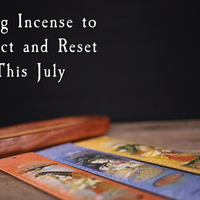 Written By Prabuji.
Written By Prabuji.
The muladhara chakra is the energetic center at the base of the spine. It’s our first chakra, our grounding chakra, and it is here that the kundalini masters describe the feminine kundalini Shakti energy to be waiting in a coil. For those who have succeeded in awakening it, they know it rises in an ascending spiral movement while making a hissing sound, causing enlightened masters to refer to her allegorically as a “serpentine power.”
When she ascends, she passes through each of the main chakras until reaching the sahasrara chakra at the crown of the head, fusing the masculine and feminine energies, the static and the dynamic.
A simple practice to awaken the kundalini begins with focusing attention on the muladhara chakra, causing prana to accumulate there. The pressure and heat generated by this concentration of vital energy will be the agents that awaken the serpentine power. Immediately after being awakened, the kundalini uncoils and penetrates the sushumna nadi, which is in line with the spine and had been previously obstructed by the kundalini itself.
Muladhara Chakra properties
Meaning of the name: The Sanskrit word mūla means “foundation,” “root,” “base” or “support” and the word adhara means “lower.” Just as its name suggests, this center, being the adhara-cakra or “the lower chakra,” represents the foundations of our physical existence, as well as the foundation of the chakric system as a totality.
Alternative names of the Muladhara chakra: We find other names within Tantric terminology: adhara (the lower one), brahma-padma (Brahma’s lotus), bhūmi-cakra (the ground chakra) catur-dala (the four petaled one), catuḥ-patra (the four-leafed one), mūlādhāra (the lower base), mūla-cakra (the root chakra), mūla-padma (the foundation lotus). Within the Vedas and the Upanishads, we can find it mentioned under the following names: adhara, brahma, mūlādhāra, mūla-kanda (the root-bulb). And within Puranic terminology we find it as: adhara or mūlādhāra.
Location of the Muladhara Chakra: The muladhara chakra is located at the very base of the spinal column, between the anus and the root of the genitals, at the intersection of the sushumna, ida and pingala nadis.
Presiding Deities: Brahma and Gaṇesha.
Lord Brahma is the first deity of the trimurti, the creator of the universe who was born from a lotus flower that emerged from the navel of Lord  Viṣshnu. Brahma, whose name literally means "evolution" or "development," is the god of the four heads which face the four cardinal points or catur-loka; their white beards symbolize wisdom. Each one of their mouths recites one of the sacred Vedas. Lord Brahma has four hands with which he holds a mala (prayer beads); the Vedas, or pustaka; a vessel with the water of life; and a lotus flower, or padma. His wives are Saraswati, the goddess of knowledge, science and the arts, and Sāvitrī, also called Gāyatrī, who is the daughter of Vivasvan or Savitṛ, the Sun God. Lord Brahma resides in Brahma-loka, which is situated in Mount Meru, in the Gandhamādana mountain range, in the Himalayas. The vehicle on which he travels through the universe is haṁsa, the swan.
Viṣshnu. Brahma, whose name literally means "evolution" or "development," is the god of the four heads which face the four cardinal points or catur-loka; their white beards symbolize wisdom. Each one of their mouths recites one of the sacred Vedas. Lord Brahma has four hands with which he holds a mala (prayer beads); the Vedas, or pustaka; a vessel with the water of life; and a lotus flower, or padma. His wives are Saraswati, the goddess of knowledge, science and the arts, and Sāvitrī, also called Gāyatrī, who is the daughter of Vivasvan or Savitṛ, the Sun God. Lord Brahma resides in Brahma-loka, which is situated in Mount Meru, in the Gandhamādana mountain range, in the Himalayas. The vehicle on which he travels through the universe is haṁsa, the swan.
Gaṇesha is the sacred god with the head of an elephant, a son of Shiva and Parvati. Gaṇesha is the God of intelligence and letters. His names Gaṇesha (Gaṇa-īśa) and Gaṇa-pati, meaning “Lord of the Gaṇas,” or "attendants of Lord Shiva", as he was chosen as their leader by Lord Shiva Himself. The story of Lord Gaṇesha (Śiva-purāṇa, Rudra-saṁhitā chapters 13-18) begins with the birth of Skanda, the elder son of the goddess Parvati and Lord Shiva. Due to ecstasy before the arrival of their first child, her breasts released sacred milk. Using this nectarian milk and the sandalwood paste which she used to anoint her body, she proceeded to model her second son. His mother gave him the name of Gaṇesha, and appointed him to personally guard her, as well as the palace. The child took the order literally, so that he prevented anyone from entering the palace, even Lord Shiva Himself. With this, Shiva was so enraged that he decapitated Gaṇesha. Upon hearing of the tragedy, Parvati, in despair, threatened to destroy the entire universe. Shiva, on seeing his wife in such a situation and to pacify her, promised to decapitate the first being that appeared and transplant its head on her son. A fortunate elephant soon appeared and his head was removed and transplanted onto the child. Lord Gaṇesha is considered the great liberator from obstacles, and therefore it is considered auspicious to invoke him before every activity or voyage.
Goddess of the Muladhara Chakra: The Goddess and Shakti, or power of this chakra, is Ḍākinī, one of the faithful attendants of the Goddess Kali. Her eyes are brilliant and very reddish, and her face has the beauty of the moon. In her four hands, she carries a skull, a trident, a sword and a shield. Her body is radiant.
Element: The element that corresponds to the first chakra is earth, or tattva-pṛthvī. This is expressed in the way we relate with the physical reality that we perceive through our senses. The essential characteristics of the earth element are stability, solidity and slowness. Every solid structure, in the universe as well as in our body, is an expression of tattva-pṛthvī: from the planets, mountains and rocks, to our bones, cartilage, skin, muscles, tendons, teeth and nails. Each element has a psychological influence on its respective chakra in a positive and at times negative manner. If the psychological influence of the earth is negative, it will be very difficult for us to accept new ideas or points of view. Our mind will acquire the solidity of a rock, making us fixed in our concepts and conclusions. If the influence is positive, we will enjoy maturity, firmness and consistency.
Element color: yellow
Power associated with this center: Concentration on this chakra awakens the knowledge of the kundalini in all its different aspects, including the means to awaken it.
Number of petals: 4
Mantras of the petals: Vaṁ, Śaṁ, Ṣaṁ and Saṁ
Mantra of the chakra: Laṁ
Sh ape of the mandala: square
ape of the mandala: square
Yantra: The yantra that represents the muladhara chakra has four petals whose Sanskrit letters are Vaṁ, Śaṁ, Ṣaṁ and Saṁ. The vibration of the very center of the first chakra is represented by the letter Laṁ. Within it lies a yellow square which symbolizes the earth element. In the lower part of the square there is a downward-pointing triangle with a yoni that symbolizes Shakti, the femininity, and a linga that symbolizes Shiva, or masculinity.
Animal of the chakra: The movement of the vital energy in the first center is symbolized by an elephant because its movement is heavy and very slow.
Plane: The muladhara chakra belongs to the Bhūr-loka, or earthly physical plane inhabited by human beings.
Sense: The sense of the first center is the sense of smell. The information perceived by the sense of smell passes from the olfactory system to the other structures of the limbic system. It consists of a network of structures near the middle of the brain, connected with the central nervous system. These structures act together to affect the emotions, motivation, memory, and so on. For this reason, it is much easier to remember odors and fragrances than images or sounds. Although most people believe that the incense or perfumed oil used in Vedic ceremonies is intended only to please by its agreeable fragrance, nothing could be further from the truth. Within the Vedic culture, the aims and objectives of incense are purely spiritual. The art of making Vedic incense with the proper fragrance to induce propitious mental states for contemplation, interiorization, concentration and meditation, is something which has been nearly forgotten in our time. The distribution of incense not only has pleasing fragrances, but proper meditative aromas.
Gland: On the physical plane, the muladhara chakra controls the suprarenal glands, and the circulatory and excretory systems. It is intimately related with the skeleton, the teeth, the nails and the hair.
Sensory organ: nose, olfactory organ
Motor organ: anus, excretory organ
Nadi: alambusā
Dosha: kapha
Vayu: apāna
Kosha: anna-maya (the gross, material body)
Gemstones: Calcite, Chalcopyrite, Chrysoprase, Amethyst Quartz, Diamond, Garnet, Red Jasper, Onyx, Pearl, Siderite, Clear Quartz, Smokey Quartz, Ruby, Black Tourmaline, Garnet, Pyrite, Opal, Obsidian, Hematite, Fire Agate
Fragrance: Sandalwood
Aromatherapy oils:
Cypress, myrr, patchouli, musk, cedar and lavender
Planet: Mars
Recommended yoga postures: The triangle, or trikonasana, and the forward pincers, or pada-hastasana  Balanced functioning of the Muladhara Chakra: If the functioning of the muladhara chakra is normal, we experience an intense desire to live. This first center is highly linked with confidence, our relationship with money, home, work and the ability to nourish oneself and stay strong. If this center is open, it allows us to clearly analyze the situations in which life places us. Moreover, we experience great strength of will, constancy, capacity for renewal, and we feel very connected to nature. A proper connection with the first center keeps us appropriately situated in physical reality with a fighting spirit, essential tools for functioning in the world.
Balanced functioning of the Muladhara Chakra: If the functioning of the muladhara chakra is normal, we experience an intense desire to live. This first center is highly linked with confidence, our relationship with money, home, work and the ability to nourish oneself and stay strong. If this center is open, it allows us to clearly analyze the situations in which life places us. Moreover, we experience great strength of will, constancy, capacity for renewal, and we feel very connected to nature. A proper connection with the first center keeps us appropriately situated in physical reality with a fighting spirit, essential tools for functioning in the world.
Imbalanced functioning of the Muladhara Chakra: The characteristic symptoms are insecurity, tension, fear, paranoia, exaggerated worrying, disconnection from reality to the point of feeling one’s survival is threatened. Hyperactivity of the chakra induces us to overeat, while if it is closed, we lose our appetite. Hyperactivity in the center is also expressed as difficulty in accepting other points of view and in changing one’s opinion, excessive material attachment, obsession with routine and an exaggerated search for security. Generally one who desires security makes efforts to maintain a routine life, moving in the known, painting the present in the colors of yesterday. For one who pursues security, the present is seen as a genuine threat. One’s desire for routine makes one conform to a life that only revolves around eating, sleeping, mating and self-protection. The necessity for security creates enmity and rejection toward all who threaten this routine, whether on the physical, mental or spiritual level. Different symptoms in the physiological aspect that are linked to an imbalance in this center are: laziness, weakness of the legs, back problems, difficulties with the teeth and gums, and with the bones, joints and blood circulation.
Secondary chakras related to the Muladhara Chakra:
Rudra, Charchika, Rudrachamunda, Siddha Chamunda, Siddha Lakshmi, Siddha Yogeshwari, Rup Vidya, Shyama, Dhantura, Tara, Shodasi, Bhatravi, Chinnamasta, Dhumavati, Bagala, Matangi and Kamala.








1 comment
Debasish Kumar Saha
May 09, 2016 at 10:49 AMTruthfulness of Interior nervous system & Balanced functioning.
thanks with
Debasish